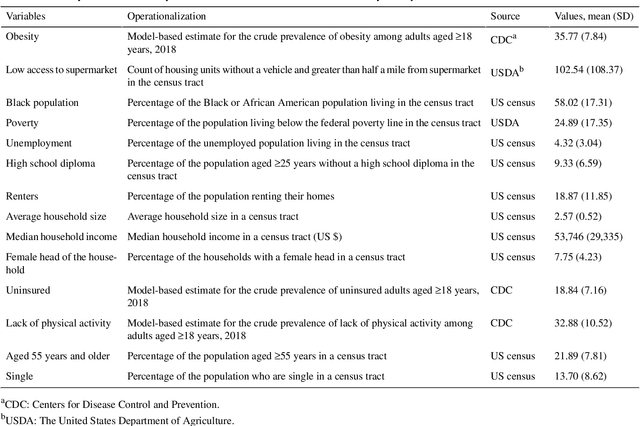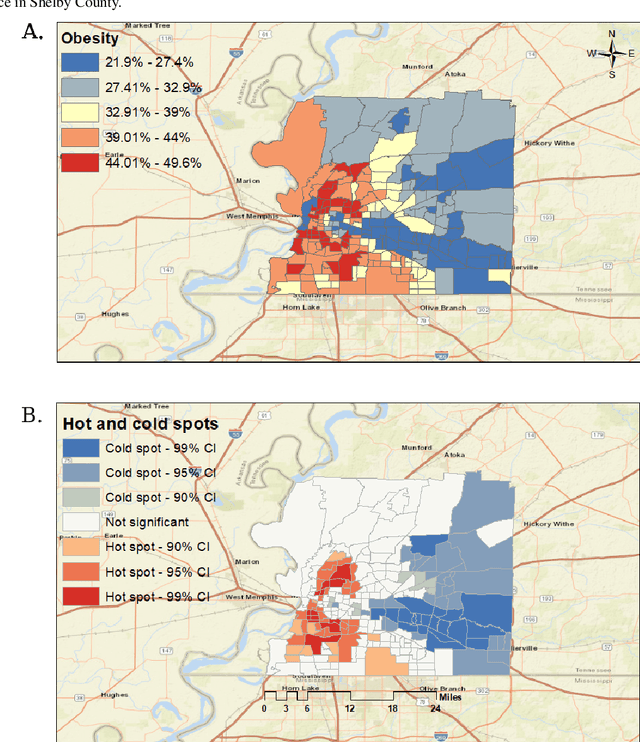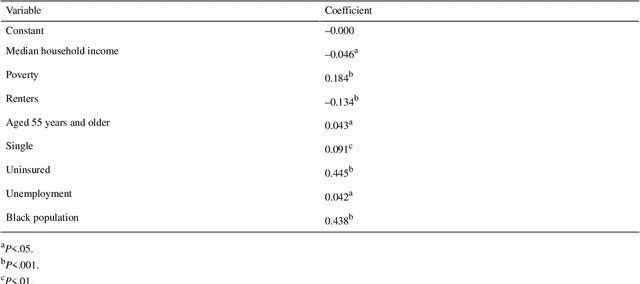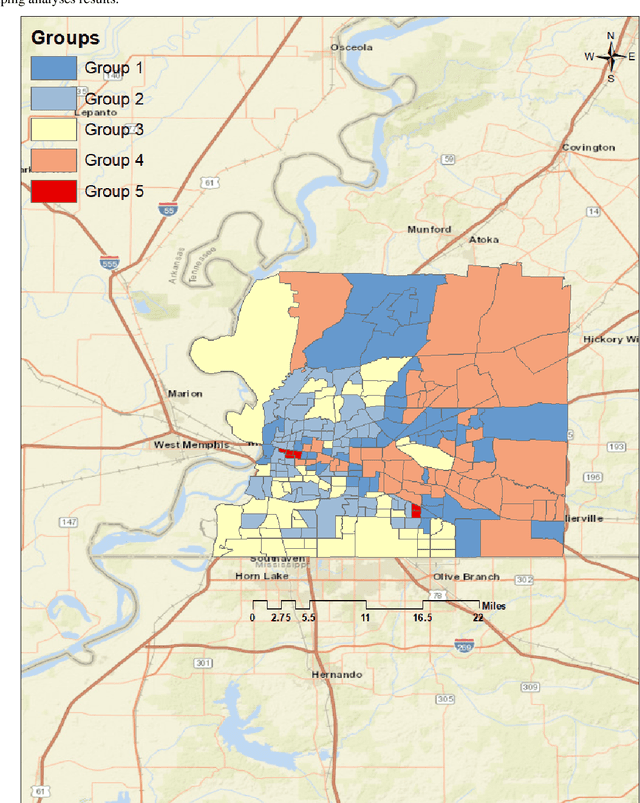Association Between Neighborhood Factors and Adult Obesity in Shelby County, Tennessee: Geospatial Machine Learning Approach
Paper and Code
Aug 09, 2022



Obesity is a global epidemic causing at least 2.8 million deaths per year. This complex disease is associated with significant socioeconomic burden, reduced work productivity, unemployment, and other social determinants of Health (SDoH) disparities. Objective: The objective of this study was to investigate the effects of SDoH on obesity prevalence among adults in Shelby County, Tennessee, USA using a geospatial machine-learning approach. Obesity prevalence was obtained from publicly available CDC 500 cities database while SDoH indicators were extracted from the U.S. Census and USDA. We examined the geographic distributions of obesity prevalence patterns using Getis-Ord Gi* statistics and calibrated multiple models to study the association between SDoH and adult obesity. Also, unsupervised machine learning was used to conduct grouping analysis to investigate the distribution of obesity prevalence and associated SDoH indicators. Results depicted a high percentage of neighborhoods experiencing high adult obesity prevalence within Shelby County. In the census tract, median household income, as well as the percentage of individuals who were black, home renters, living below the poverty level, fifty-five years or older, unmarried, and uninsured, had a significant association with adult obesity prevalence. The grouping analysis revealed disparities in obesity prevalence amongst disadvantaged neighborhoods. More research is needed that examines linkages between geographical location, SDoH, and chronic diseases. These findings, which depict a significantly higher prevalence of obesity within disadvantaged neighborhoods, and other geospatial information can be leveraged to offer valuable insights informing health decision-making and interventions that mitigate risk factors for increasing obesity prevalence.
 Add to Chrome
Add to Chrome Add to Firefox
Add to Firefox Add to Edge
Add to Edge